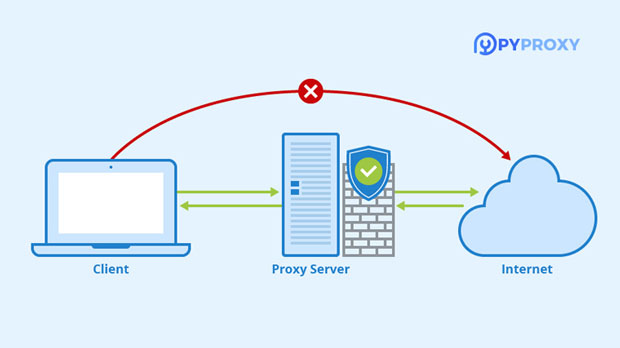In the digital world, maintaining privacy, security, and seamless connectivity while browsing or using web applications is crucial. Both socks5 proxy and VPN services are commonly utilized to safeguard online activities and circumvent regional restrictions. However, when it comes to selecting the best option for a RESTful API client like Resty, the choice between SOCKS5 and VPN becomes essential. socks5 proxies offer a more lightweight, flexible solution with minimal overhead, ideal for applications requiring efficient network performance, while VPNs provide a broader scope of privacy and security features, albeit at the cost of additional resource consumption. In this article, we will delve into the key differences between SOCKS5 proxies and VPNs, analyzing which one is better suited for Resty’s use cases and providing valuable insights for developers and users alike. Understanding SOCKS5 Proxy and VPNBefore making an informed decision on which option is best for Resty, it is important to understand the basic concepts of SOCKS5 proxies and VPNs. SOCKS5 Proxy: SOCKS (Socket Secure) is a protocol that routes internet traffic through a proxy server, offering a level of anonymity and security. SOCKS5 is the latest version, which supports a wider range of internet protocols and provides more robust features. Unlike traditional proxies that typically only handle HTTP and HTTPS traffic, SOCKS5 can route any type of traffic, including FTP, SMTP, and even peer-to-peer applications. This makes it a versatile choice for many applications, including those that require fine-grained control over network connections.VPN (Virtual Private Network): A VPN, on the other hand, creates a secure tunnel between your device and the internet, encrypting all the data transmitted over that connection. It routes all your traffic through a remote server, effectively masking your real IP address and providing an additional layer of security and privacy. VPNs are typically more feature-rich, offering encryption protocols, leak protection, and broader privacy measures. Key Differences Between SOCKS5 Proxy and VPNWhen evaluating which service is better suited for Resty, it’s essential to compare the core aspects of SOCKS5 proxies and VPNs. Here, we examine the key factors such as speed, security, resource consumption, and use case compatibility.1. Speed and Performance: SOCKS5 proxies tend to offer faster performance than VPNs. This is because a SOCKS5 proxy does not encrypt data, reducing the overhead and latency typically seen with VPNs. If the primary need is speed and low-latency connections for REST API calls, SOCKS5 might be the better option, especially for lightweight applications where security is not the primary concern.2. Security and Privacy:VPNs are superior in terms of security and privacy. They encrypt all data between the client and the server, making it nearly impossible for hackers or third parties to intercept sensitive information. If you are concerned about data privacy, particularly when interacting with public networks, VPNs provide an added layer of protection that SOCKS5 proxies cannot match. While SOCKS5 does provide some level of anonymity by hiding the real IP address, it does not offer the same level of encryption or protection against potential cyber threats as a VPN.3. Resource Consumption:A notable difference between SOCKS5 proxies and VPNs is resource usage. VPNs consume more resources due to the encryption process and tunnel creation. This can result in higher CPU and memory usage, which may not be ideal for resource-constrained environments. On the other hand, SOCKS5 proxies have minimal resource consumption, which makes them more suited for high-performance applications like Resty, where network efficiency is crucial.4. Compatibility and Use Case:SOCKS5 proxies are designed for flexibility. They can handle a wide range of protocols beyond HTTP and HTTPS, such as FTP, which makes them ideal for specialized applications or cases where you need custom configurations. VPNs, by contrast, are more suitable for users seeking full internet traffic encryption and protection, making them the go-to choice for general security and privacy.Why Choose SOCKS5 Proxy for Resty?1. Lightweight and Faster Connections:For applications like Resty, which are often used for making HTTP or API calls, speed is crucial. SOCKS5 proxies allow for faster connection speeds due to the lack of encryption. In many cases, users require low latency and minimal overhead when making numerous API requests, and SOCKS5 can help achieve this without compromising performance.2. Greater Flexibility:As a flexible proxy solution, SOCKS5 can route multiple types of traffic and is not restricted to HTTP/HTTPS like traditional proxies. This means that even if Resty needs to make connections for other protocols, such as FTP, it can rely on SOCKS5 without additional configuration.3. Less Resource Consumption:Since SOCKS5 does not need to create a secure tunnel and encrypt data, it consumes far fewer resources. For developers using Resty in an environment where performance is key and server resources are limited, this is a significant advantage. In comparison, VPNs often come with additional overhead, affecting the overall performance and efficiency of API calls.When Should You Consider a VPN for Resty?Although SOCKS5 proxies may be more suitable for the general use case of Resty, there are scenarios where a VPN would be the better choice.1. Enhanced Security Needs:If your RESTful API calls involve sensitive data or require a higher level of security, using a VPN could be beneficial. With data encryption, a VPN ensures that even if the connection is intercepted, it is virtually impossible for malicious actors to gain access to the information. For developers working with financial data, health information, or other highly confidential data, a VPN provides that extra layer of security.2. Bypassing Geolocation Restrictions:If your REST API requires access to region-restricted content or services, a VPN can help. VPNs provide the ability to spoof your location by connecting to remote servers in different countries, helping to bypass geolocation-based restrictions. This can be useful for applications that need to interact with geo-restricted APIs.3. Full Traffic Encryption:When using public or untrusted networks, a VPN will encrypt all of your traffic, providing protection not just for the API calls made by Resty, but for all the other activities on your device. This comprehensive encryption ensures privacy and prevents data leakage or man-in-the-middle attacks.ConclusionThe choice between SOCKS5 proxy and VPN for Resty depends on your specific needs. For applications focused on speed, low-latency, and minimal resource usage, SOCKS5 proxies offer a lightweight, efficient solution. However, if security and privacy are paramount, especially for sensitive data exchanges or when working with public networks, VPNs provide a higher level of protection through encryption and privacy features. Ultimately, understanding your priorities in terms of performance, security, and use case compatibility will help guide your decision in choosing the most suitable option for your needs.
Jan 16, 2025





























































